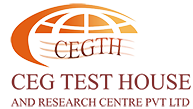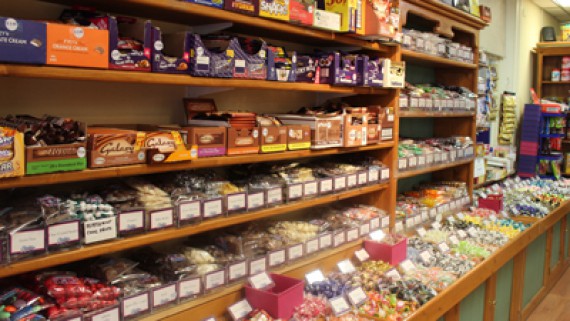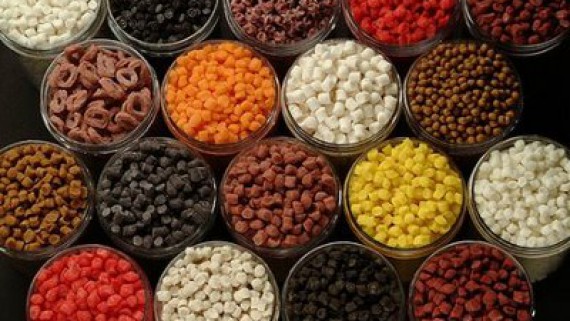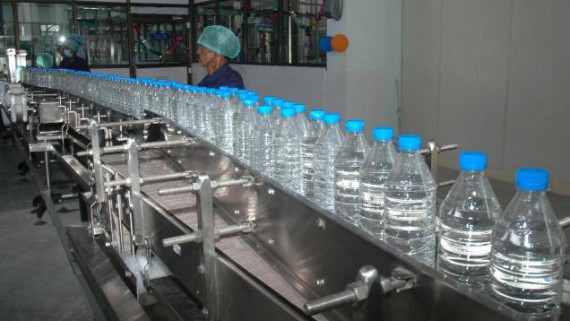What Does Your Chewing Gum Contain? Is it safe and good, Read ?
Chewing gums are very popular in western countries like USA, Canada and the UK. It is also becoming very popular in developing countries like India, particularly amongst the student community. In fact, India, with its open market economy and upwardly mobile middle class, is embracing much of the western culture, including dietary preferences. The global market for chewing gum is currently valued at a staggering USD 30 billion!

Types of Chewing Gum
Chewing gums come in various shapes & sizes, colors, tastes & flavors and of a variety of brand names. These include the following:
- Mint flavored chewing gumsg. Wrigley’s Spearmint, Wrigley’s Doublemint; Eclipse Mints; Extra Mints etc.
- Fruit flavored chewing gumsg. Juicy Fruit
- Teeth-whitening chewing gumsg. Orbit White
- Bubble gumsg. Hubba Bubba, Super Bazooka etc.
There are also various categories of chewing gum available nowadays that cater to various consumer needs. While the standard type is sweetened with sugar, the health-conscious opt for chewing gums made of artificial sweeteners. A special type of chewing gum is also available for smokers who are looking to quit smoking. This type of chewing gum is impregnated with nicotine. Some of these special types of chewing gums are given in Table
Table 1: Special Types of Chewing Gum
| Function of Chewing Gum | Active Ingredient | Brand Name & Availability |
| Analgesic | Aspirin | Aspergum, North America |
| Increase of attentiveness | Caffeine | Stay alert, USA |
| Antacid | Calcium carbonate | Chooz, USA |
| Prevention of dental caries | Chlorhexidine | Hexit, USA |
| Xylitol | V6, UK | |
| Smoking cessation | Nicotine | Nicorette, India & various other countries |
| Nutrition | Vitamin C | Endekay Vitamin C, UK |
Composition of Chewing Gum
Chewing gum is composed of Gum Base, Softeners, Sweeteners and Flavors. These are briefly discussed below.
Gum Base: Chewing gum used to be made from latex sap of the sapodilla tree, which was originally native to Central America. The sap was called chicle and formed the gum base. Other substances that were also used as gum base included beeswax and paraffin wax. However, nowadays, synthetic rubber such as polyethylene and polyvinyl acetate or a mixture of artificial and natural bases are used as the gum base. It is the gum base that makes the chewing gum “chewable”.3
Softeners: These are added to retain moisture and help prevent the gum from becoming hard. Common examples of softeners include glycerin or vegetable oil.
Sweeteners: These are added to gum to give it a sweet flavor. Usually, sugar or corn syrup is used as natural sweetening agents. There are a number of artificial sweeteners, but the most commonly used are xylitol, sorbitol, mannitol and aspartame.
Flavors: The flavor component of chewing gum provides long lasting, high intensity and high quality flavor. These flavouring ingredients are usually added last during the manufacture of chewing gums. The most common flavors include mint spearmint, menthol and fruit flavors.4
Lanolin – A Controversial Ingredient in Chewing Gum
Lanolin, from the Latin lāna (wool) and oleum (oil), literally means wool wax, is a yellow waxy substance secreted from the skin glands of wool-bearing animals such as sheep. Lanolin is an ingredient of chewing gum and forms a component of the gum base, and thus not declared explicitly by the manufacturers. Since this is commonly used in skincare products, using it as an ingredient of chewing gum is not only unhealthy, but also unethical and therefore highly controversial. Moreover, sheep sprayed with insecticides could lead to these toxic chemicals eventually entering the human body, and thereby causing adverse health consequences. Scientists are of the opinion that these insecticides could even enter breast milk and thereby transferred to babies of young mothers.5, 6
What Does the Codex Alimentarius Say?
The Codex Alimentarius has prescribed maximal limits for various types of Food Additives in chewing gum. These are briefly tabulated in Table 2.7
Table 2: Maximum Levels of Various Food Additives in Chewing Gum as per Codex Alimentarius guidelines
| Food Additive | Maximum Level |
| Caramel Color, Class III | 20000 mg/kg |
| Caramel Color, Class IV | 20000 mg/kg |
| Fast Green FCF | 300 mg/kg |
| Guaiac Resin | 1500 mg/kg |
| Polydimethylsiloxane | 100 mg/kg |
| Polyvinylpyrrolidone | 10000 mg/kg |
| Stearyl Citrate | 15000 mg/kg |
What Does the FSSAI Say? 8
FSSAI, the apex regulatory agency on food in India, has clearly stipulated that Chewing Gum or Bubble Gum should be prepared from chewing gum base or bubble gum base, natural or synthetic, non-toxic; cane sugar and corn syrup. As per the Food Safety and Standards (Food Product Standards and Food Additives) Regulation, 2011 (FSSR), there are 14 sources of gum base, including 8 natural sources such as natural rubber latex, natural resin, agar (food grade) etc.; and 6 synthetic sources such as synthetic rubber latex, synthetic resin, polyvinyl acetate etc.
The gum base can also contain milk powder, malt, chocolate, coffee, gelatin (food grade), permitted emulsifiers, purified water as well as nutrients like protein, vitamins and minerals.
The FSSR also specifies that the product must be free from dirt, filth, adulterants as well as harmful substances. The FSSR additionally recommends that the product must conform to the standards, as stipulated in Table 3.
Table 3: Chemical Composition of Chewing Gum/Bubble Gum
| Ingredients | Chewing Gum | Bubble Gum |
| Gum | Not less than 12.5% by weight | Not less than 14% by weight |
| Moisture | Not more than 3.5% by weight | Not more than 3.5% by weight |
| Sulfated ash | Not more than 9.5% by weight | Not more than 11.5% by weight |
| Acid insoluble ash | Not more than 2.0% by weight | Not more than 3.5% by weight |
| Reducing sugars | Not less than 4.5% by weight | Not less than 5.5% by weight |
| Sucrose | Not more than 70% by weight | Not more than 60% by weight |
As already discussed, since artificial sweeteners can also be used in chewing gum/bubble gum, the FSSR has recommended maximum limit for these additives too. These are listed below:
- Saccharin sodium – 3000 ppm
- Aspartame (methyl ester) -10000 ppm
- Acesulfame potassium – 5000 ppm
- Sucralose – 1250 ppm
Antioxidants
These can also be added to chewing gum/bubble gum. Here also, the FSSR has fixed the maximum limits. For example, the maximum limit for the antioxidants Butylated hydroxyanisole (BHA) and Tertiary butylhydroquinone (TBHQ) is 250 ppm, while forTocopherol, it is 1500 ppm.
Preservatives
These include Benzoic acid and Sodium/Potassium benzoate, which can be present at a maximum limit of 1500 ppm. Other preservatives, such as Sulfur dioxide can be present at2000 ppm max., while Sorbic acid and its Calcium, Sodium and Potassium salts (calculated as sorbic acid) can be present at 1500 ppm max. Class I Preservatives as listed under Regulation 3.1.4 should be present as per GMP.
Polyols
These can be present singly or in combination, and include Sorbitol, Manitol, Xylitol, Isomalt,Lactitol and Maltitol should be present as per GMP.
Colors
These can be used singly or in combination within the specified limits but within the same class, i.e. either natural or synthetic.
Natural Colors: These can be present singly or in combination, and include Chlorophyll,Caramel, Curcumin or Turmeric, β-carotene, β apo-8 carotenal, Methyl/Ethyl ester of β apo-8 carotenin acid, Canthaxanthin, Riboflavin/Lactoflavin, Annato and Saffron, which should be present as per GMP.
Synthetic Colors and Inorganic Coloring Matter: These can be present singly or in combination. These include Erythrosine, Carmoisine, Ponceau 4R, Fast Green FCF, Indigo carmine, Brilliant Blue FCF, Sunset Yellow FCF and Tartrazine, which should be present at a maximum limit of 100 ppm. Titanium dioxide should be present at a 10000 ppm max.
Flavors
These can be added singly or in combination. These include Natural flavor/Natural flavoring substances/Nature identical flavoring substances/Artificial flavoring substances, Vanillinand Ethyl vanillin, which should be present as per GMP.
Emulsifiers
These can be added singly or in combination. The only approved emulsifier for use in chewing gum/bubble gum is mono- and di-glycerides of edible fatty acids and should be present as per the regulation.
Alkalizing Agents
These can also be used singly or in combination and include Sodium, Potassium, Calcium,Magnesium and Ammonium carbonates. Of these, Calcium carbonate and Magnesium carbonate should be present as per GMP.
Neutralizing Agents/Acidulants
These include Phosphoric acid at 22000 ppm max as P2O5 and L-Tartaric acid at 3000 ppmmax. Besides these, Citric acid, Malic acid, L-ascorbic acid and Lecithin should be present as per GMP.
Lubricants
These include Talc and Mineral oil at 0.2%; Icing sugar, Glycerin, Paraffin wax or liquid paraffin (food grade) and Calcium, Magnesium, Sodium salts of Stearic acid (food grade) as per GMP.
Miscellaneous
The only item under this category is Phosphated starch, which should be present as per GMP.




